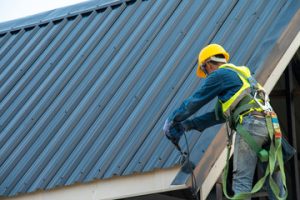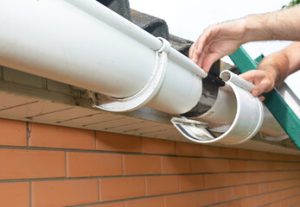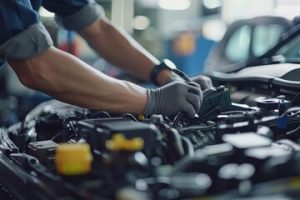Like many other dog breeds, Pomsky needs regular exercise and a balanced diet. Early socialization and training can also help to keep them from becoming too hyperactive and prone to destructive behaviors.

Consider rescuing or adopting a Pomsky from a shelter rather than buying one from a breeder. This will help to reduce overpopulation and support responsible breeding practices.
Pomskies are high-energy dogs that thrive on daily physical and mental stimulation. As a result, they require lots of exercise, including daily walks and playtime with toys and games. If your pooch doesn’t get enough exercise, he or she may become bored or destructive. Luckily, this energetic breed also loves to learn and can benefit from activities like puzzle toys and DIY obstacle courses.
Grooming is another important part of keeping your Pomsky healthy and happy. Be sure to brush their teeth a few times a week and wipe their ears regularly to remove any buildup or debris that can cause irritation. You should also trim their nails once or twice per month to keep them from getting too long, which can impact their walking and mobility. Getting your dog accustomed to grooming procedures at a young age can make the process less stressful and help you spot any potential issues, such as ear infections or dental problems, early on.
Responsible pomsky breeders will conduct extensive genetic health testing on both parent dogs to minimize the risk of passing on any hereditary diseases to their puppies. They will also focus on socialization, exposing their dogs to new people and environments from a very young age to ensure they grow up into well-rounded and confident adults.
The average lifespan of a pomsky is 13 to 15 years, though they can live longer. Since they’re a relatively new breed, it’s hard to predict their exact longevity, but as the result of two world-class breeds, they can be expected to enjoy a long and healthy life.
Like any other dog, it’s vital to get your Pomsky veterinary care and pet insurance coverage. In addition to annual exams and routine vaccinations, your pomsky will need regular dental cleanings and eye checkups to prevent any serious conditions from developing down the road. Lastly, it’s always a good idea to have your pet microchipped, as this can help find them in case of an emergency.
Training
Pomskyes are highly adaptable and intelligent dogs, making them a great addition to any family. However, they do require consistent training and direction. Without proper instruction, this breed can easily become destructive or develop behaviors like barking that aren’t appropriate for a home. As a result, early socialization is important for this breed as it helps them grow into well-adjusted pets that can be comfortable in any setting.
With consistent positive reinforcement and patience, you can teach your dog to’sit,”stay,’ ‘come’ and more. The key is to be the pack leader and show your pup that you are the one in charge of everything, from food to play. Once your dog sees you as the alpha they will naturally want to obey your commands and follow your lead.
It’s also important to exercise your Pomsky frequently, especially if you live in an urban area where space is limited. Exercise will keep this high-energy breed healthy, fit and happy. Daily walks or runs, training sessions, and food puzzles are all great ways to engage your Pomsky’s body and brain.
Getting your dog to calm down and listen to you can be difficult, but once you learn to control their emotions it will make the training process much easier. A simple technique, called the calm freeze, is a very effective way to demonstrate to your dog that they are not allowed to act out on their own accord. By crouching down and turning away, this technique can communicate that it’s not okay for them to bark or jump on the couch and that you are in control.
Regular grooming is another part of holistic care that ensures your Pomsky’s health and well-being. Brushing their coat regularly prevents matting and keeps it healthy. You should also pay attention to nail trims and dental care to keep their teeth strong and healthy. Regular visits to a veterinarian near Polaris are also important, not only for checking up on the overall health of your dog but also for administering necessary vaccinations and parasite prevention.
As a Pomsky owner, it is crucial to provide your dog with a balanced diet that is tailored to their specific needs. A professional veterinarian can help you with this and offer advice on exercise, training, and mental stimulation to support your Pomsky’s holistic health.
Exercise
Pomskies are energetic companion dogs that require ample physical and mental stimulation to stay happy, healthy, and well-behaved. Their spirited, playful personalities reflect their parent breeds, and they’re eager to please. The right training techniques, early socialization, and consistent exercise can help manage their energy levels so they can live comfortably in your home.
While Pomskies are adaptable to a variety of lifestyles, they do best with regular exercise and playtime to keep their minds sharp and their bodies fit. They thrive on a combination of activities that provide both physical and mental challenges, including walks, fetch, and agility exercises. Vary the intensity and duration of these activities according to your dog’s age, health status, and fitness level.
Proper nutrition is also crucial to fueling your Pomsky’s lively nature and maintaining their soft, fluffy coat. They need high-quality, human-grade dog food that’s tailored to their specific dietary needs to ensure they’re getting the nutrients necessary for healthy digestion and overall vitality.
Positive reinforcement-based training is highly effective with this intelligent breed, and it also helps to build a strong bond between you and your pet. Start with basic commands like ‘sit’ and ‘stay,’ then progress to more advanced skills as your Pomsky masters the basics. Providing mental exercise by engaging their curious minds with puzzle toys, scent work, and training sessions is another excellent way to help prevent boredom and destructive behaviors.
While the Pomsky’s parents are known for their athleticism and endurance, this hybrid is usually a little more laidback than its Husky parent. This means they can be a better choice for people who may not have the living space or backyard size to accommodate a larger, more active dog. They’re also less prone to barking than their husky parent, which makes them a good choice for families with children and pets.
As with all dogs, responsible pet ownership involves understanding the key health concerns that can affect Pomskies and taking steps to reduce their risk of developing them. This includes selecting a reputable breeder who follows ethical breeding practices and performs extensive health testing on their puppies. It’s also essential to monitor your dog for signs of poor health and seek veterinary attention when needed.
Care
Pomskies thrive on regular exercise, a nutritious diet, and routine veterinary care. Proper grooming and dental hygiene can help reduce the risk of health problems down the road. Like many intelligent, energetic breeds, Pomskies need mental stimulation to keep their brains sharp. This can be achieved by engaging in progressively challenging training sessions and playing games with your puppy.
When it comes to selecting a Pomsky, look for a responsible, ethical breeder. If possible, visit the breeder in person and meet the dam and sire. This will allow you to see how the parents look and assess whether they are healthy. Look for signs of hereditary diseases, such as deteriorating hips and eyes that are opaque.
Because the Pomsky is still a fairly new designer dog, it’s hard to predict how the pup will turn out. However, most breeders seem to be leaning towards a “Huskeranian” appearance, which looks quite similar to a Siberian Husky but in a smaller package.
Since Pomskies are very intelligent and energetic, it’s important to be consistent with training and to set firm boundaries. However, never be harsh with your puppy or raise your voice. Doing so can cause your Pomsky to become aggressive and can also make it difficult for you to train him in the future.
Unless it is medically necessary, do not shave your Pomsky. Their coats are there for insulation and protection, and shaving them can damage their skin and cause irreparable hair loss. Also, do not shave their ears or around their eyes. It is very important to keep these areas clean and free of debris.
When it comes to your Pomsky’s nutrition, it is important to feed them a high-quality, holistic pet food. Look for a brand that is grain-free, gluten-free, and contains no artificial colors, flavors, or preservatives. Additionally, you should avoid foods that contain meat by-products or meat meal, as these can lead to poor digestion and other health problems in your puppy.
It is also a good idea to supplement your Pomsky’s diet with CBD oil. This all-natural oil has been shown to help pets with everything from anxiety to seizures. Be sure to talk to your vet before adding any supplements to your pet’s diet.


